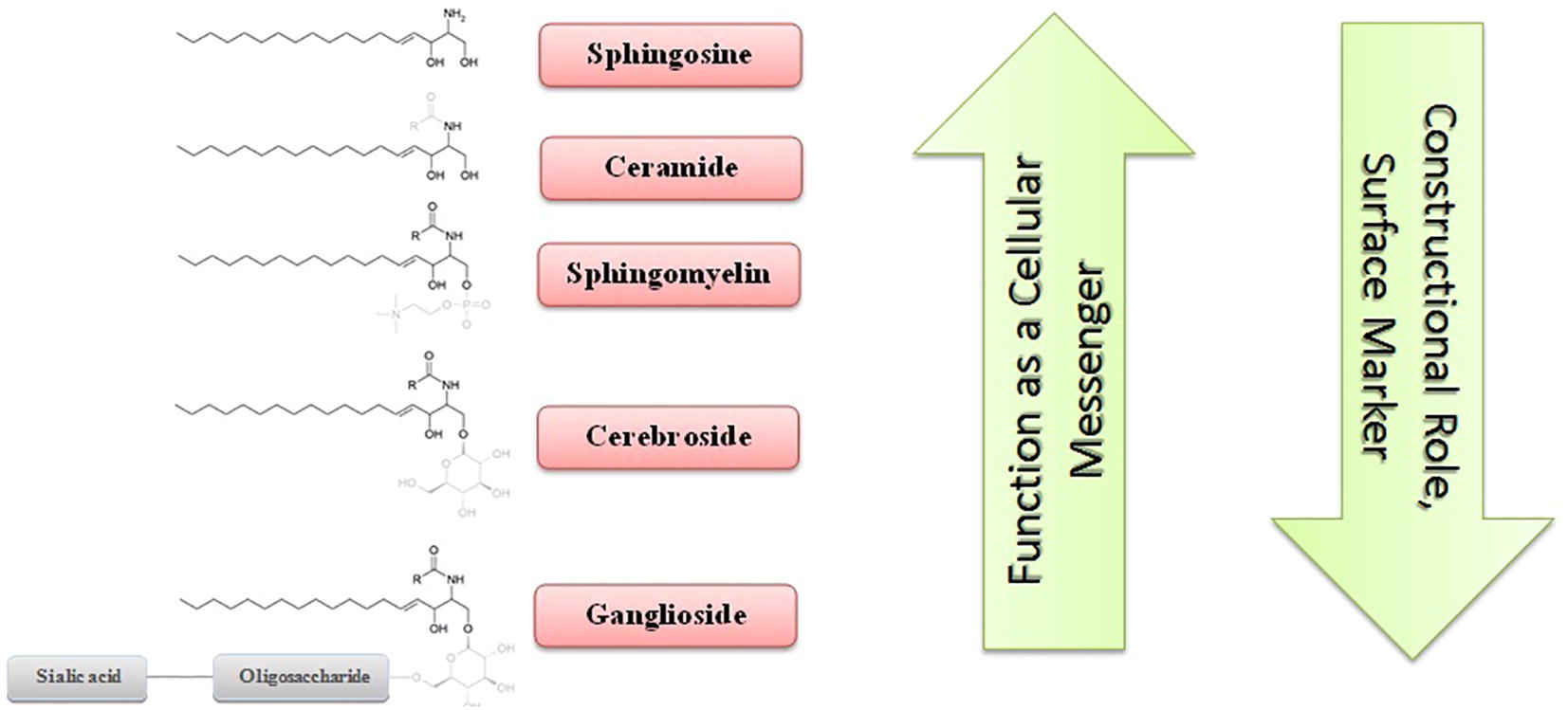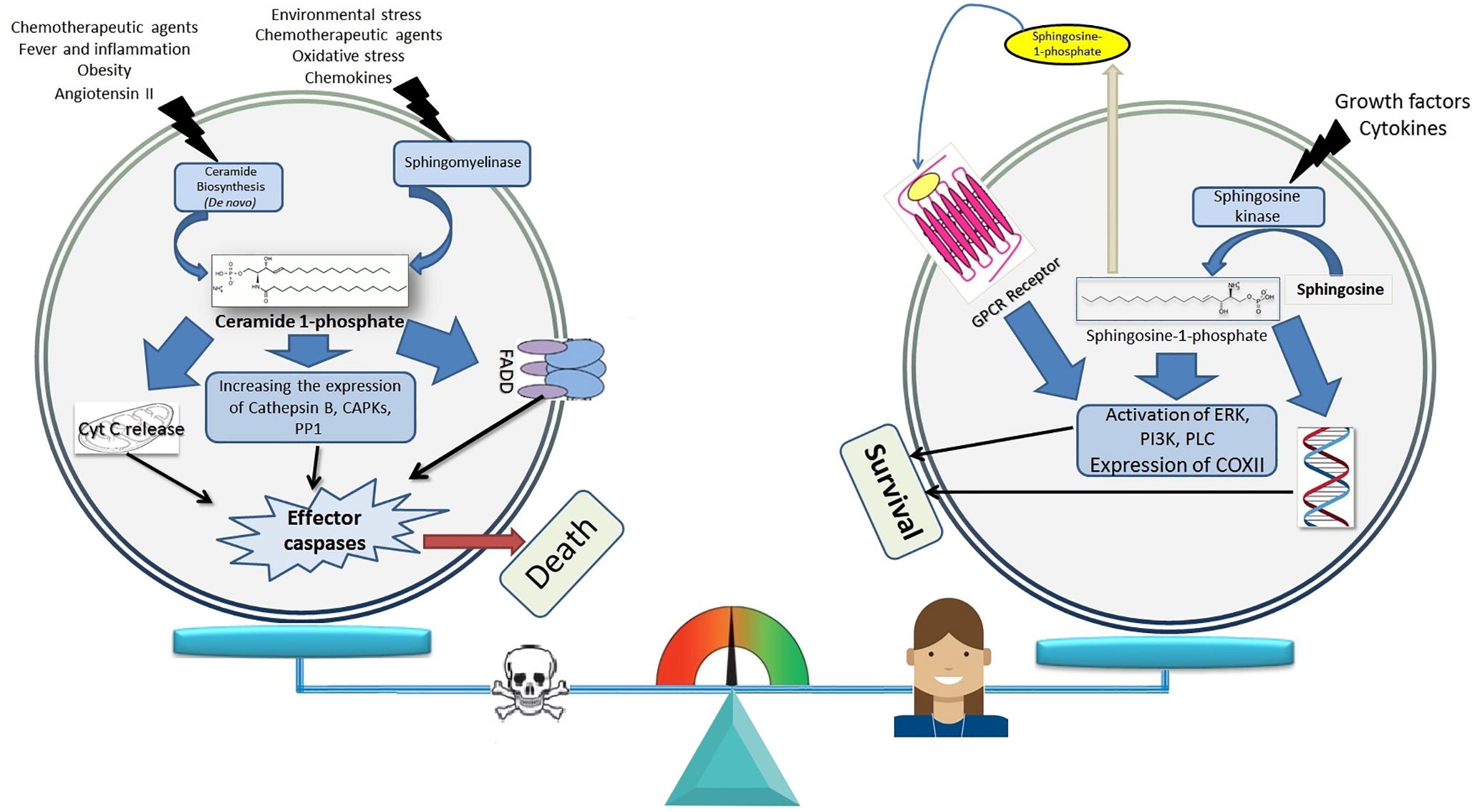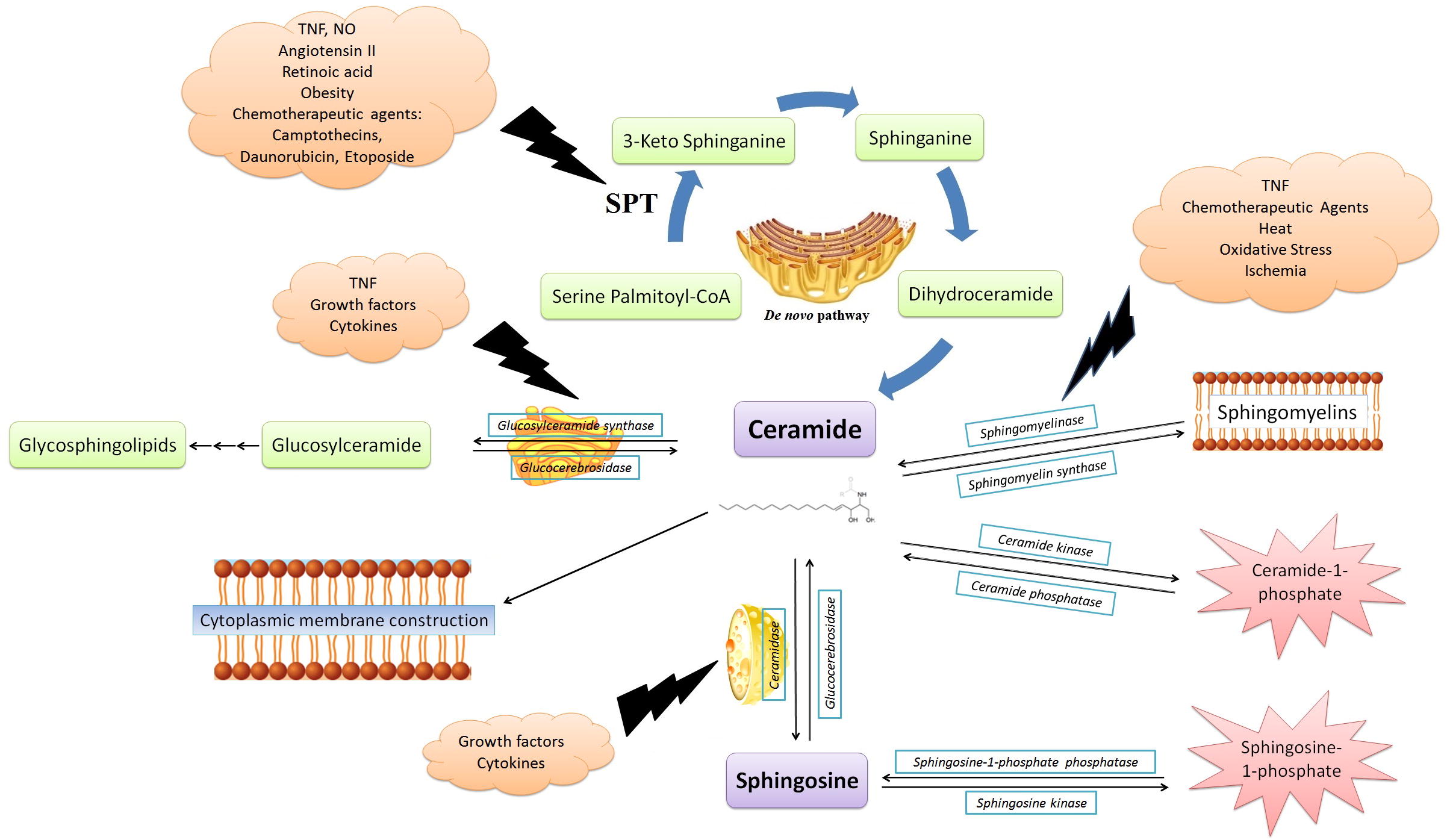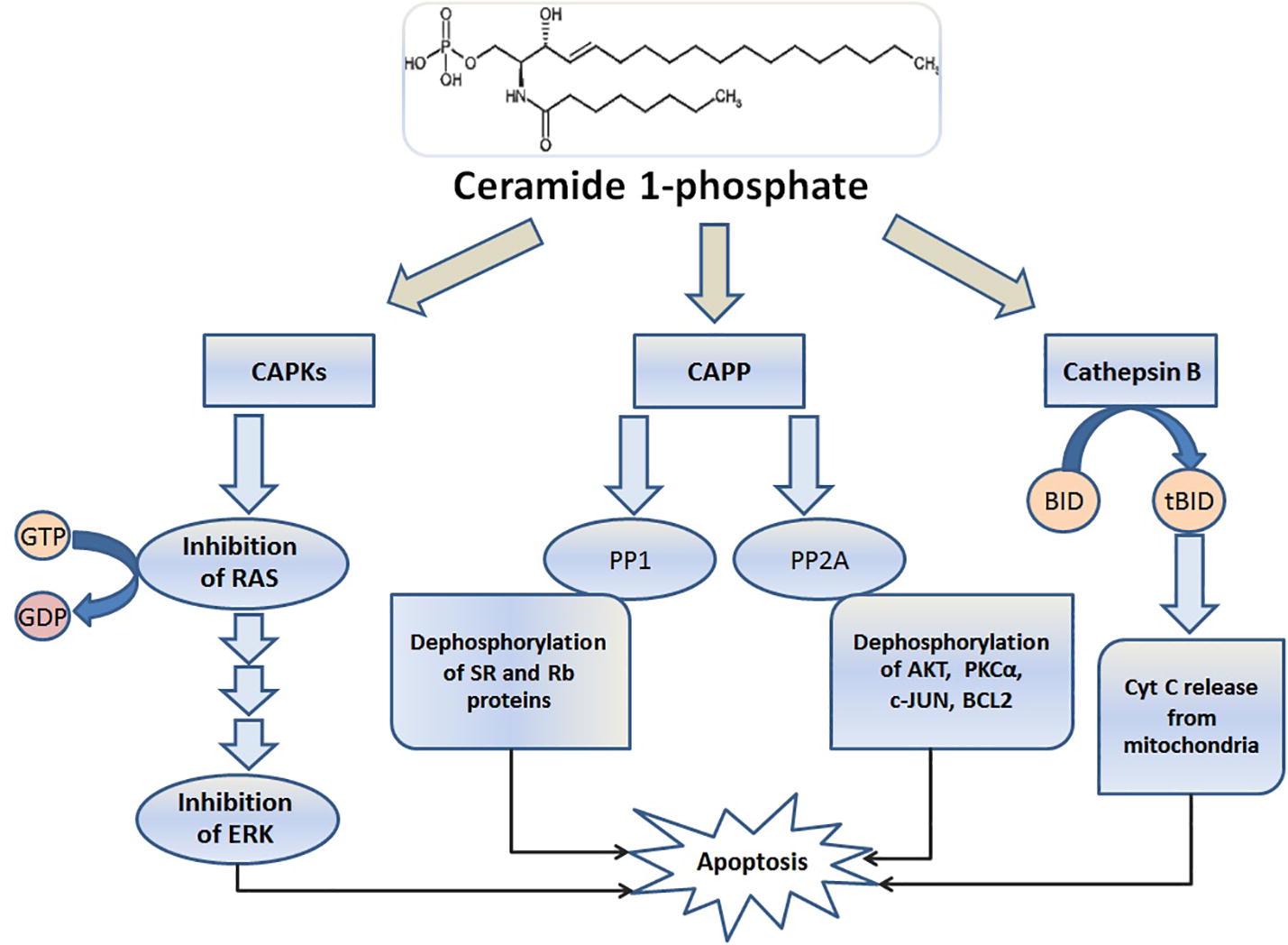Figures & data
Fig. 1 The structure of the important sphingolipids and comparing their messenger and structural roles. Simple sphingolipids have been considered mostly as messengers and complex molecules have been principally notable for their structural role.

Fig. 2 The balance between total cellular phosphorylated sphingosine and ceramide levels as a regulator factor of cell survival or death message. Activating the main pathways of ceramide production, by increasing the total cellular ceramide levels, trigger the release of cytochrome C (Cyt C), which act on downstream activation of FADD (Factor associated cell death) and most importantly, increase the activity and expression of ceramide operators include CAPKs (Ceramide-activated protein kinases), cathepsin B and PP1 (protein phosphatase 1) and eventually activate caspases and induce apoptosis. Increasing the destruction of ceramide and its transformation into sphingosine and the activity of the sphingosine kinase also result in an enhancement in the intracellular content of the phosphorylated sphingosine and this mediator, by its G-protein coupled receptor receptors and by increase of the expression of PI3K (phosphoinositide 3-kinase), PLC (Phospholipase C), ERK (extracellular signal-regulated kinase), and COX II (cyclooxygenase II) propagate the message of life and division.

Table 1 The factors affecting important enzymes involved in ceramide metabolism.
Fig. 3 The main routes of ceramide metabolism. The most important pathway for the ceramide biosynthesis is the De novo pathway, in which the first step of the coupling of palmitic acid to the coenzyme A with the D-serine amino acid occurs by the SPT enzyme. After that, in the next three steps, the ceramide will eventually be obtained. Ceramide can be converted to sphingomyelin, or diverse isoforms of sphingomyelinase break sphingomyelin in the cytoplasmic membrane into ceramide. The glucosylceramide synthase enzyme in the Golgi apparatus can glucosylate the ceramide present within the cytoplasm and finally produce glycosphingolipids in several steps. Glucocerebrosidase is another enzyme that can reverse the ceramide, unlike the previous one. The breakdown of ceramide by various isoforms of ceramidase and its transformation into sphingosine and free fatty acid creates another event that can affect ceramide. In contrast, Ceramide synthase produces ceramide by connecting the sphingosine to free fatty acid. The phosphorylation of ceramides and sphingosine in the cytoplasm has led them to become an active form of their biological mediators, and this incident makes them a secondary messengers. Finally, free ceramide in the cytoplasm can be used to make cytoplasmic membranes.

Fig. 4 The major effectors of ceramide. The phosphorylated ceramide inside the cytoplasm as a secondary messenger serves of the three main categories of operators for sending death message to the cell. In the kinase group, Ceramide-activated protein kinases (CAPKs) are the most important kinases that activated by ceramide and CAPKs also inhibit Rat sarcoma (RAS) phosphorylation of its GTPase activity. In this way, the pathway of extracellular signal-regulated kinases (ERK) is inhibited as one of the main pathways for proliferation and cell division. Cathepsin B (as a protease) and ceramide produce a truncated BID (tBID), and the tBID activates the caspases dependent apoptosis by releasing cytochrome C from the pore in the mitochondria. Ceramide-activated protein phosphatases (CAPPs) is the third group of ceramide operators that their two main groups, Protein phosphatase 2A (PP2A) and Protein phosphatase 1 (PP1), dephosphorylate many of the factors, which involved in maintaining the cell survival.

